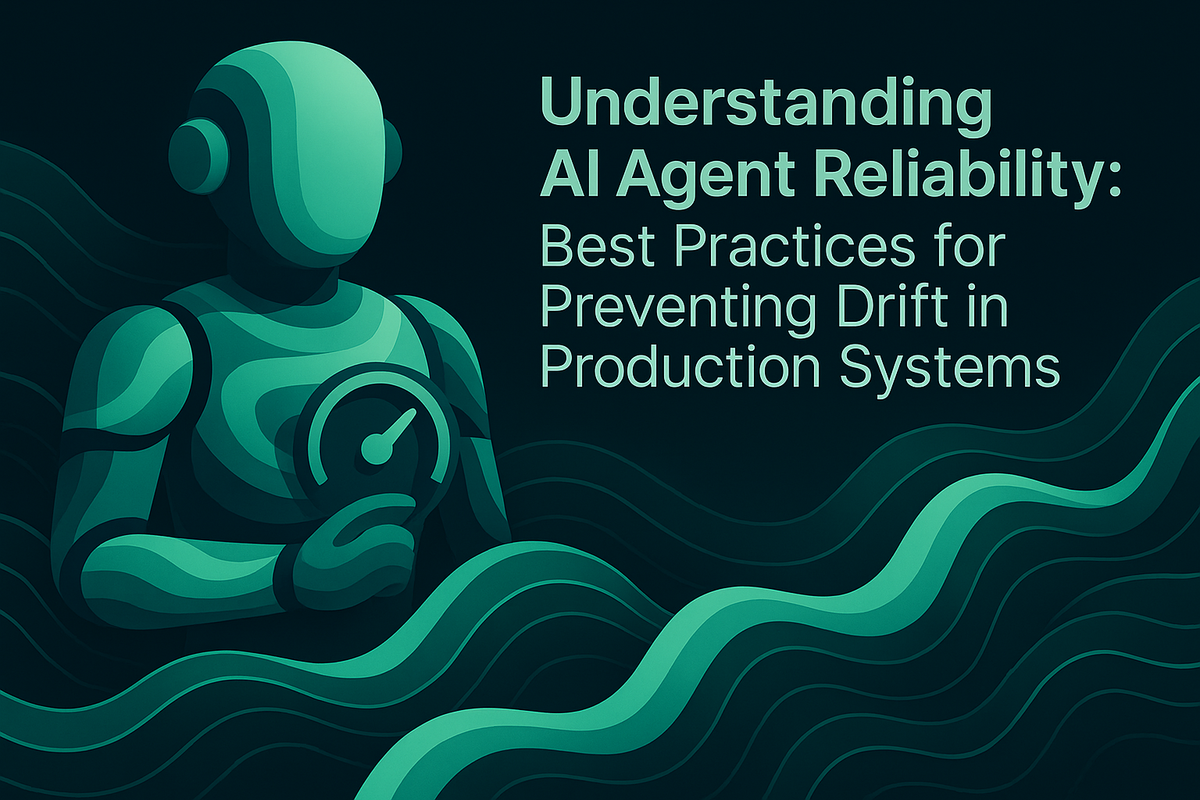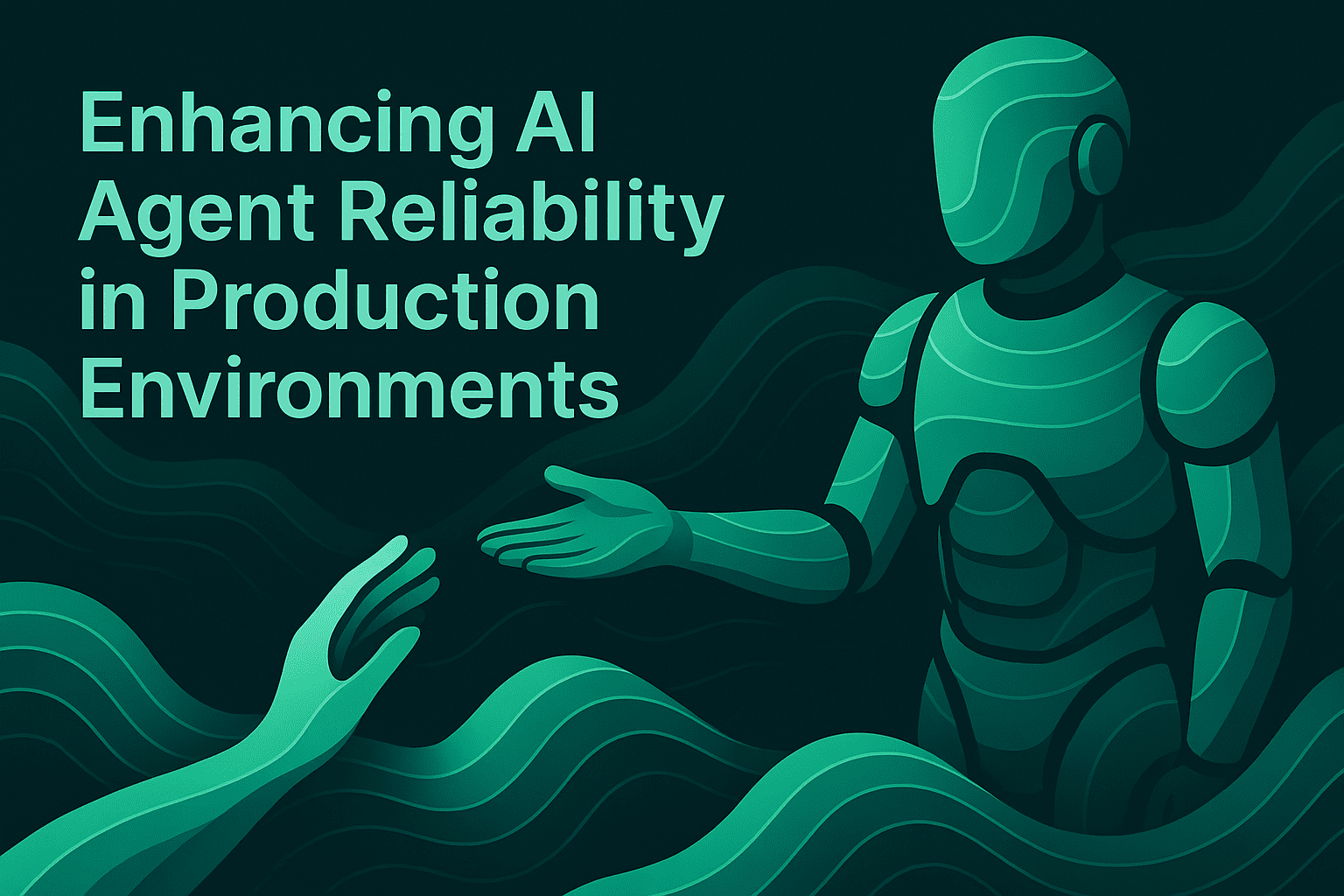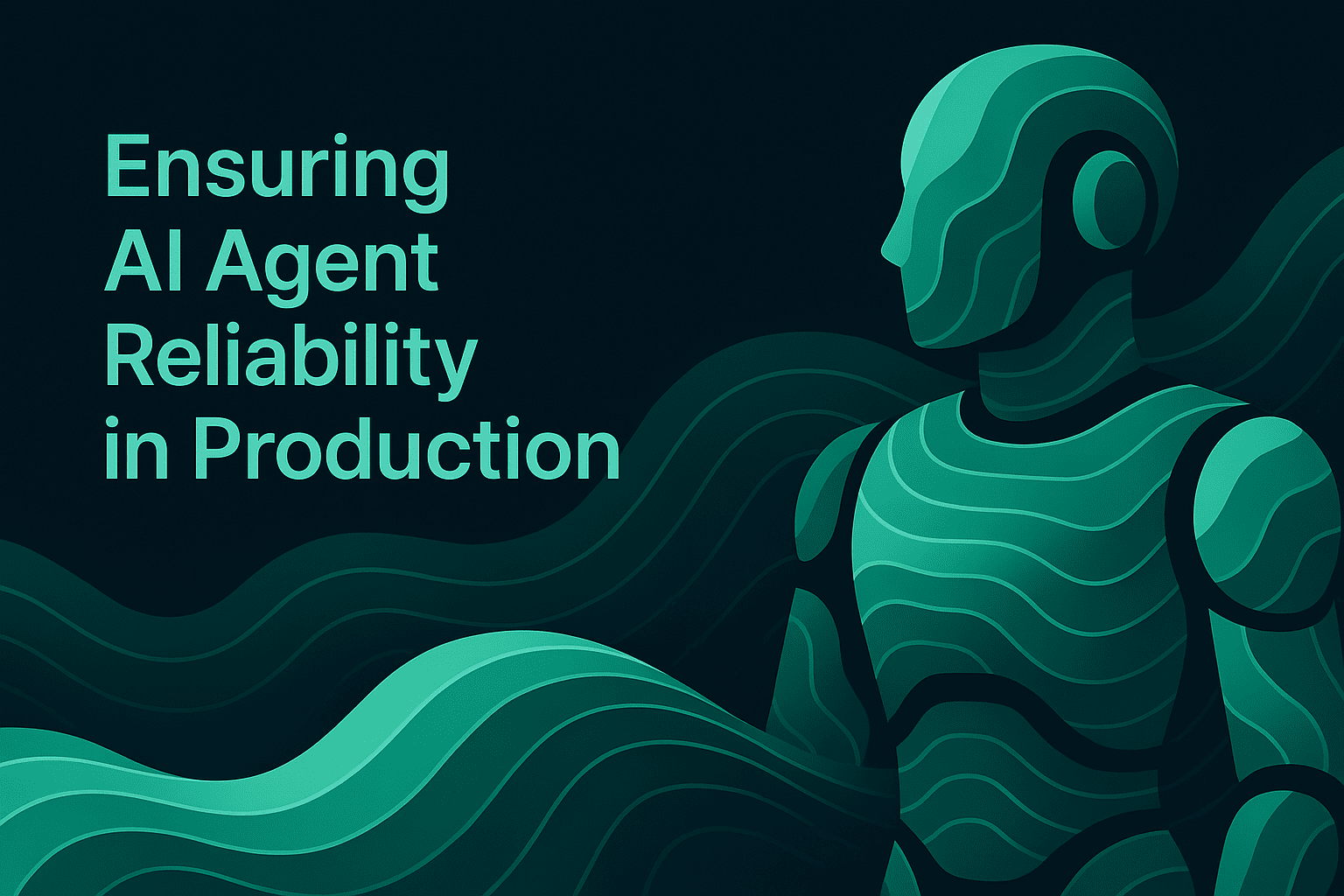Understanding AI Agent Reliability: Best Practices for Preventing Drift in Production Systems

TL;DR AI agent reliability depends on continuous monitoring and proactive drift prevention. Research shows 91% of ML systems experience performance degradation over time through concept drift, data drift, and prompt drift. Essential prevention strategies include automated testing pipelines, prompt version control, continuous monitoring with real-time alerts, and comprehensive observability. Success requires clear ownership, leveraging platforms like Maxim AI for distributed tracing, evaluation, and production monitoring to maintain agent quality throughout the lifecycle.
Understanding AI Agent Reliability and Drift
AI agent reliability refers to the consistent ability of autonomous AI systems to perform their intended tasks accurately and safely in production environments. As organizations increasingly deploy AI agents for critical workflows; from customer support to financial decision-making; maintaining this reliability becomes non-negotiable for business success.
Research indicates that 91% of machine learning models experience performance degradation over time, a phenomenon known as drift. Agent drift represents the misalignment between an agent's learned behavior and its intended objectives, often developing gradually and remaining difficult to detect in early stages.
Production AI systems face three primary drift types that require different detection and mitigation strategies:
Model Drift: Changes in statistical properties of production data compared to training data, causing accuracy declines and prediction errors that accumulate gradually.
Agent Drift: Misalignment between actual agent behavior and expected outcomes in complex multi-agent systems, often emerging from goal drift, context drift, or reasoning drift as the agent encounters new scenarios.
Prompt Drift: Variability in instruction templates that leads to inconsistent agent responses, particularly problematic when multiple team members modify prompts without version control or coordination.
Drift can occur due to multiple factors including inadequate evaluation datasets that don't reflect production usage patterns, seasonal variations in user behavior, permanent environmental changes in the business landscape, and insufficient validation controls on acceptable task types. Understanding these causes enables teams to implement targeted prevention strategies before drift impacts end users.
Why Reliable AI Agents Matter in Production
Reliable AI agents form the foundation of trustworthy AI systems that users depend on for critical decisions. When agents consistently perform as expected, they build user confidence, ensure regulatory compliance, and protect organizational reputation across all customer touchpoints.
The stakes are particularly high in mission-critical industries. In healthcare, unreliable diagnostic agents could provide outdated treatment recommendations if not continuously updated with current clinical research. Financial trading agents operating on stale market data risk substantial losses. Customer support agents that drift from company policies damage brand perception and customer satisfaction scores.
The business impact of unreliable AI manifests through inaccurate predictions, declining overall system performance, potentially harmful decisions in critical applications, system malfunctions with unpredictable behavior, and direct financial losses.
Beyond technical performance, reliable agents support compliance requirements. Regulatory frameworks increasingly demand transparency, fairness, and explainability in AI systems. Drift detection and prevention capabilities provide the audit trails and performance documentation necessary for compliance validation with industry standards.
Types of AI Agent Drift and Warning Signs
Understanding specific drift manifestations helps teams implement appropriate monitoring and prevention strategies for their production systems.
Concept Drift occurs when relationships between input data and target variables change over time. Examples include fraudsters adapting strategies to evade detection systems or sudden environmental changes like supply chain disruptions that fundamentally alter prediction patterns the model learned during training.
Data Drift happens when input data distributions change while the underlying relationships remain stable. A sentiment analysis model trained on 2020 product reviews may struggle with 2024 reviews if consumer language, expectations, or product features have evolved significantly, even though the classification logic remains sound.
Prompt Drift in agent systems emerges from inconsistent or evolving instruction templates. Small variations in how tasks are phrased can produce dramatically different agent behaviors, becoming particularly problematic in multi-agent systems where coordination depends on standardized communication patterns.
Early warning signs teams should monitor include declining success rates on established task types, increasing error frequencies without code changes, response inconsistency for similar inputs, slow response times indicating inefficient reasoning paths, and user feedback indicating off-target or irrelevant outputs. Catching these signals early prevents minor issues from escalating into major production incidents.
Detecting Drift Through Comprehensive Monitoring
Effective drift detection requires comprehensive metric tracking across multiple dimensions. Unlike traditional software monitoring that focuses on availability and latency, AI monitoring must evaluate output quality, decision accuracy, and behavioral consistency alongside system health metrics.
Essential AI agent metrics include accuracy rates targeting 95% or higher, task completion rates above 90%, response speeds under 500ms, error rates below 5%, and resource utilization metrics. Maxim AI's observability platform tracks these metrics through distributed tracing, providing session-level, trace-level, and span-level granularity that enables teams to visualize every step in an agent's lifecycle.
Statistical evaluators complement performance tracking. F1-score, precision, and recall measurements quantify classification accuracy over time. Semantic similarity evaluators detect whether agent outputs maintain consistent meaning as production conditions evolve.
Implementing production monitoring involves real-time dashboards tracking latency, cost, token usage, and error rates, automated alerting through Slack or PagerDuty integrations that ensure teams respond quickly when drift indicators appear, anomaly detection using statistical tests to identify significant distribution shifts, and canary prompts with known expected outputs that validate core agent capabilities remain stable over time.
Best Practices for Preventing Drift
Building Robust Testing Pipelines
Automated testing pipelines form the first line of defense against production drift. Comprehensive testing catches issues before deployment rather than discovering them through user complaints. Effective validation requires testing at multiple stages with increasing production realism.
Maxim's evaluation framework supports development testing with local agents for rapid iteration, integration testing through agent HTTP endpoints, evaluation runs against curated datasets with automated quality assessment, and AI-powered simulations that test agents across hundreds of scenarios and user personas before production exposure.
CI/CD integration enables evaluation on every code commit, automatically running evaluation suites, comparing results to baseline performance thresholds, blocking deployment if quality metrics decline, and alerting teams to regressions requiring investigation before code reaches production.
Prompt Engineering and Version Control
Well-structured prompts provide stable foundations for reliable agent behavior. Prompt management enables teams to organize, version, and deploy prompts without code changes, ensuring consistent instruction formats across deployments.
Effective prompts incorporate clear instructions with concrete examples, specified output formats using JSON schemas or structured templates, negative instructions that explicitly state prohibited behaviors, and context boundaries that define information scope to prevent agents from making assumptions beyond provided context.
Prompt versions enable systematic evolution tracking with version control that captures changes over time, facilitates rollbacks when issues emerge, and supports A/B testing between alternatives. Prompt deployment strategies support blue-green deployments for instant switchover, canary releases for gradual rollout, and feature flags for conditional enablement.
Prompt partials enable reusable components across multiple prompts, ensuring consistency while reducing maintenance overhead. Changes to shared partials propagate automatically across all dependent prompts, maintaining alignment without manual updates.
Data Management and Retraining Strategies
Models trained on historical data inevitably become stale as production realities evolve. Proactive retraining strategies maintain relevance over time through systematic data collection and model updates.
Dataset management in Maxim supports importing multi-modal datasets including images, continuously curating datasets from production data, and enriching data using human-in-the-loop feedback. Production logs provide invaluable training signal through dataset curation that systematically collects examples from production traffic, particularly edge cases where agents struggled.
Human annotation workflows capture expert judgment on agent outputs, grounding model improvements in human preferences rather than automated metrics alone. This ensures agents align with actual user needs and organizational standards over time.
Even with stable metrics, schedule periodic retraining to incorporate recent production data reflecting current usage patterns, expanded scenario coverage from simulation results, corrected examples from human feedback loops, and updated domain knowledge from external sources. Balance retraining frequency against computational costs based on application criticality.
Leveraging Comprehensive Observability
Maxim's observability suite empowers teams to track, debug, and resolve live quality issues with real-time alerts, create multiple repositories for production data across applications using distributed tracing, measure in-production quality using automated evaluations based on custom rules, and curate datasets for evaluation and fine-tuning with minimal friction.
Maxim's evaluator store provides pre-built evaluators including AI evaluators for faithfulness, context relevance, toxicity detection, and task success, statistical evaluators for BLEU and ROUGE metrics, and programmatic evaluators for valid JSON and URL validation.
Moving Forward with Reliable AI Agents
AI agent reliability requires continuous attention throughout the production lifecycle. Teams must implement robust testing frameworks, maintain prompt discipline through version control, curate quality datasets from production feedback, and leverage comprehensive observability platforms that provide visibility into agent behavior at every level.
Start building reliable AI agents with Maxim AI to access end-to-end simulation, evaluation, and observability capabilities that help teams ship AI agents more than 5x faster with confidence, or schedule a demo to see how Maxim's unified platform addresses the complete AI lifecycle from experimentation through production monitoring.
FAQs: People Also Ask
Q1: What is AI agent reliability? AI agent reliability refers to the consistent ability of autonomous AI systems to perform their intended tasks accurately, safely, and predictably in production environments across varying conditions and usage patterns.
Q2: How can you prevent drift in production AI systems? Prevent drift through automated testing pipelines, prompt version control, continuous monitoring with real-time alerts, periodic retraining with updated datasets, comprehensive observability frameworks, and clear operational ownership for agent quality.
Q3: What causes drift in AI models and agents? Drift is caused by changing data distributions, evolving user behaviors, seasonal variations, inadequate evaluation datasets, environmental shifts in the business landscape, prompt variability, and insufficient validation controls on task types.
Q4: What tools can monitor AI drift in real-time? AI observability platforms like Maxim AI provide distributed tracing, automated evaluations, real-time dashboards, anomaly detection, and alerting systems that identify drift indicators before they impact end users significantly.
Q5: How often should AI agents be retrained? Retraining frequency depends on application criticality and domain stability. Critical applications may require weekly or monthly cycles, while stable domains might retrain quarterly, but all agents benefit from scheduled updates incorporating production feedback.
Q6: What are best practices for prompt version control? Use dedicated prompt management systems with version tracking, systematic change logs, rollback capabilities, A/B testing support, reusable prompt partials for consistency, and CI/CD integration for automated testing before deployment.
Q7: What's the difference between concept drift and data drift? Concept drift occurs when relationships between inputs and outputs change, while data drift happens when input distributions shift but underlying relationships remain stable. Both require different detection and mitigation strategies.


